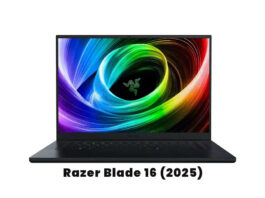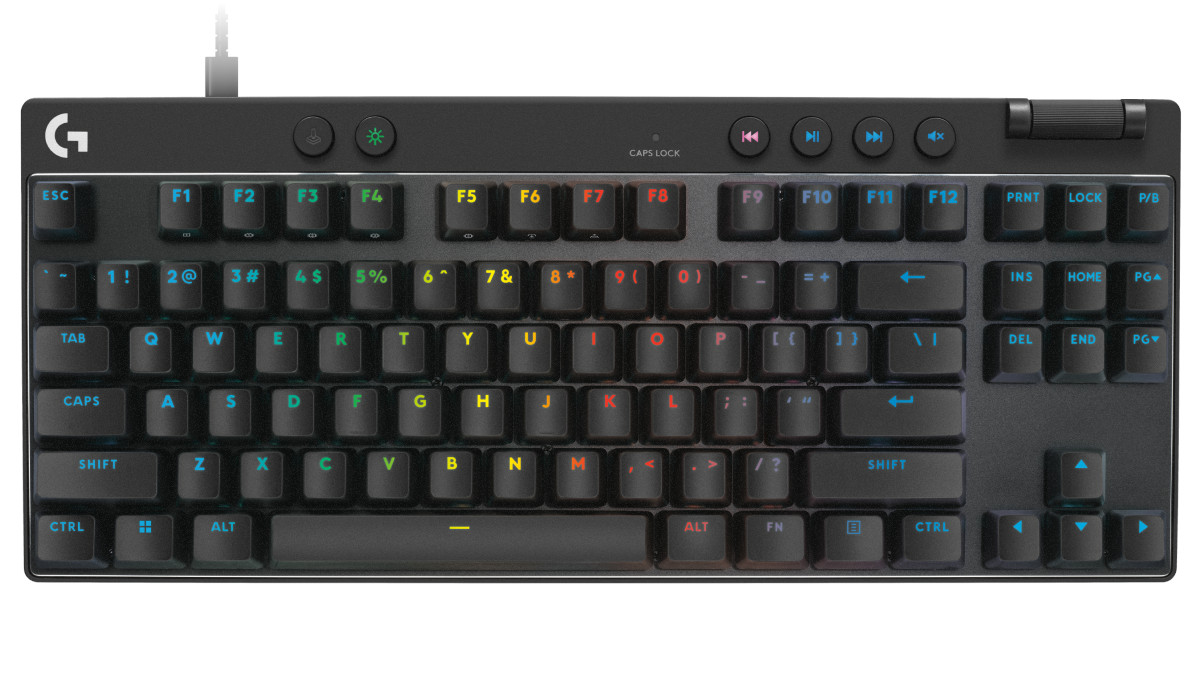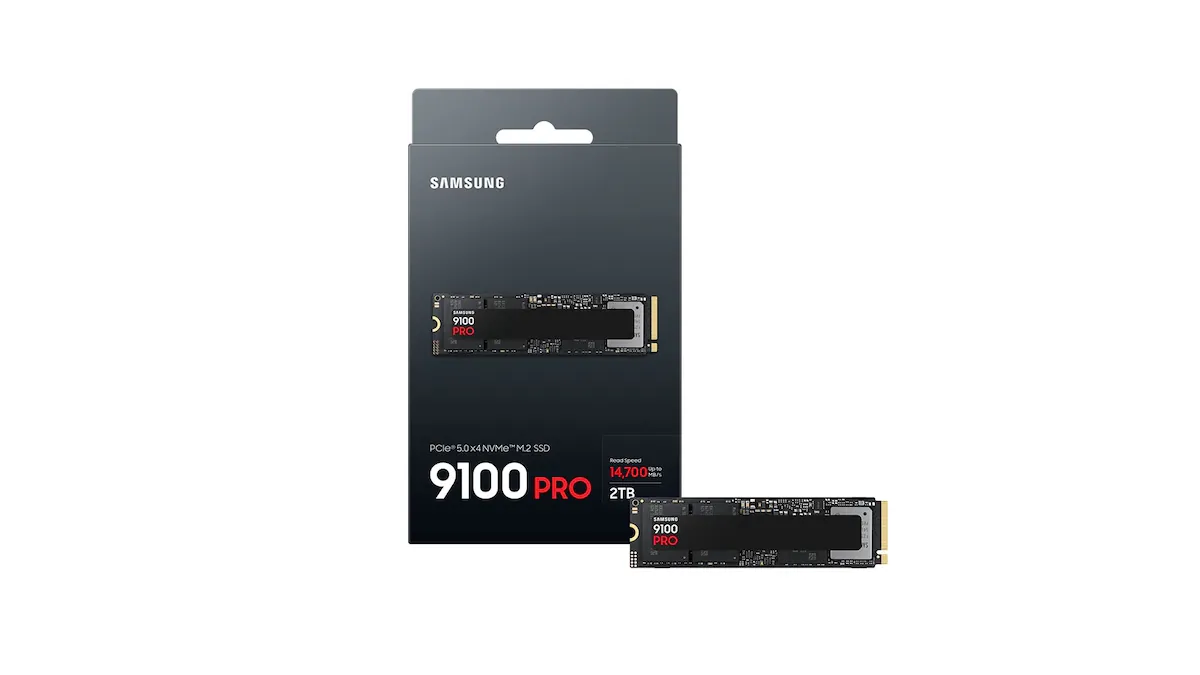The exceptional Polaroid I-2 introduces an array of shooting possibilities through its remarkable manual settings, sharp lens, and impressive autofocus. It exudes the signature Polaroid charm and stands as the foremost instant camera for creative potential. However, this comprehensive manual control demands a higher price, which may deter all but the most dedicated Polaroid enthusiasts.
Pros:
- extensive manual exposure controls
- Precise LiDAR autofocus
- Convenient USB-C charging
- Bluetooth connectivity with a complimentary smartphone app
Cons:
- Results exhibit less consistency compared to Instax
- Viewfinder visibility can be challenging
- The minimum 1/250 sec exposure limit can be constraining in bright conditions.
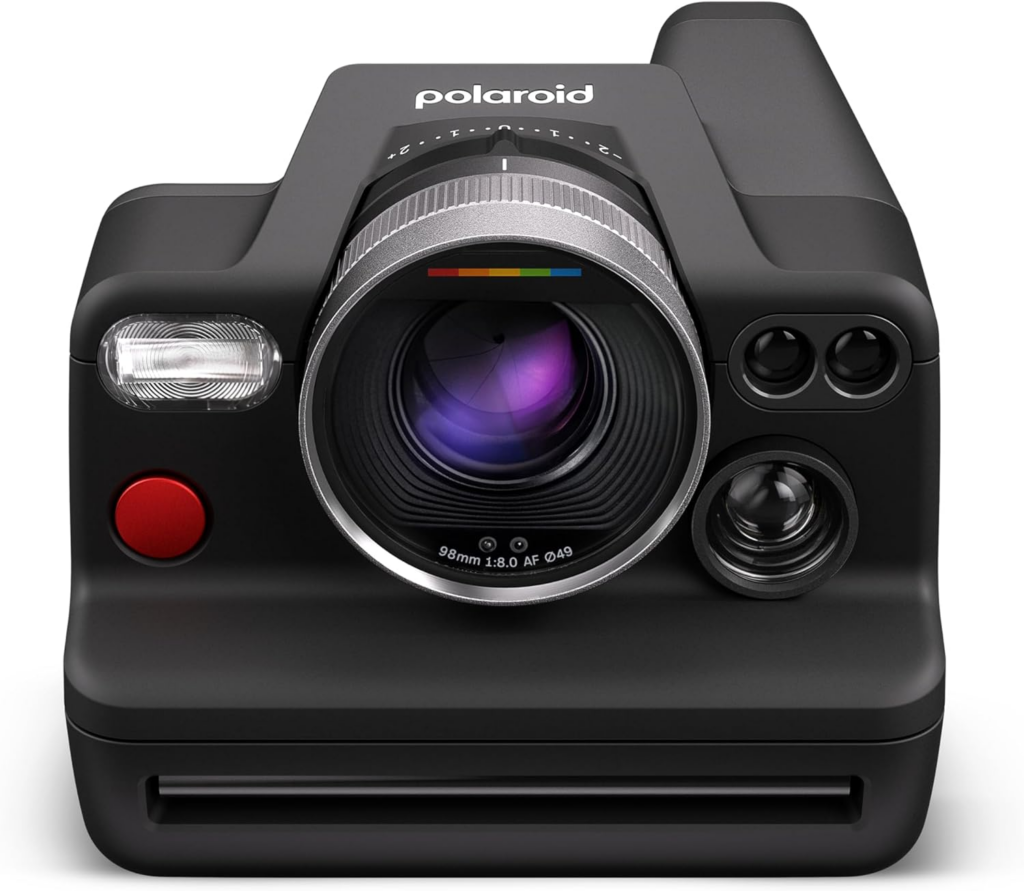
POLAROID I-2: Quick Review
Polaroid’s history is a winding journey. Edwin Land introduced the world’s first instant camera, the Model 95, in 1948, which was a resounding success. The company faced bankruptcy in 2001 and 2008 when instant film production ceased. Polaroid ventured into diverse products, from DVD players to the Polaroid Snap Android smartphone.
In 2017, Polaroid garnered support from a shareholder of The Impossible Project, leading to the name Polaroid Originals and eventually reverting to the original Polaroid name in 2020. A tumultuous ride.
Recent years have seen Polaroid’s resurgence with products like the Polaroid Now, Now+, and tiny Polaroid Go, considered some of today’s best instant cameras. The new Polaroid I-2 represents a more mature, advanced offering, the first instant camera to offer manual exposure controls. It’s also tech-savvy, connecting with the Polaroid smartphone app via Bluetooth for remote shooting.
Nevertheless, it retains its nostalgic charm. Users found themselves transported to a simpler, happier time. The I-2, crafted for the artistic, may not suit everyone. Its price may deter amateurs, but for devoted Polaroid fans or those serious about instant photography, the I-2 is a delight to use, provided you’re open to experimentation and investing in Polaroid film.
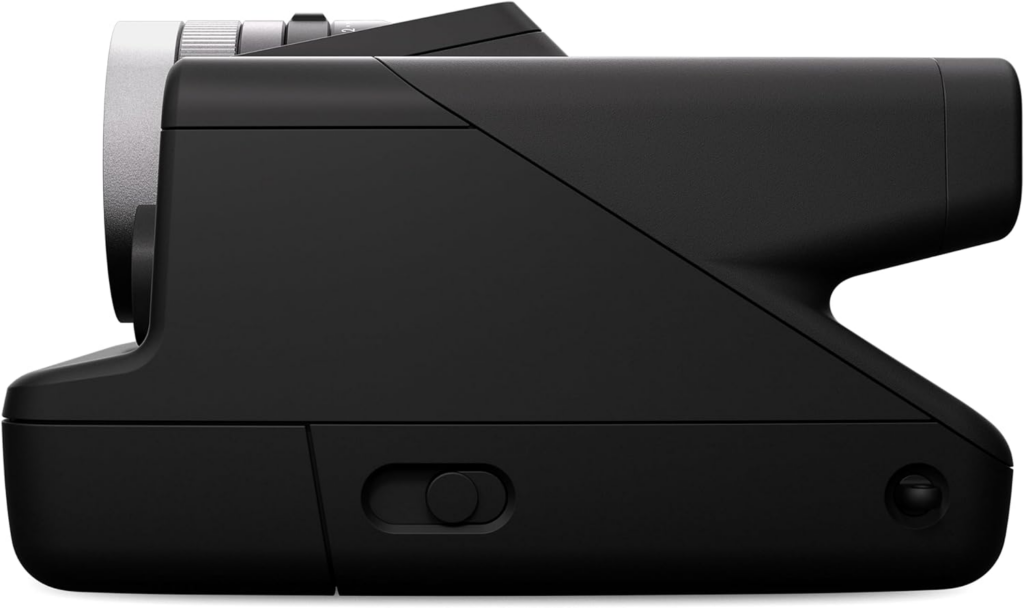
POLAROID I-2: Price and Availability
The Polaroid I-2 hit the market on September 7, 2023, and is currently available on the Polaroid website and through photography retailers for $599 / £599 / AU$1,095 at the time of writing. The price itself sparks discussion.
For the same cost as a single I-2, you could obtain four Polaroid Now+ cameras or eight Instax Mini 12s, with some budget left for the film. Alternatively, you could invest the money in one of the top mirrorless cameras. The I-2’s price tag is a hurdle for many potential users, not to mention the higher cost per Polaroid print compared to Fujifilm Instax alternatives.
However, the I-2 isn’t tailored for the mass-market or Instagram-focused generation. It appeals to a more niche audience appreciating the history and craftsmanship of analog instant photography. If budget constraints aren’t a concern, the Polaroid I-2 shines as the premier instant camera on the market.
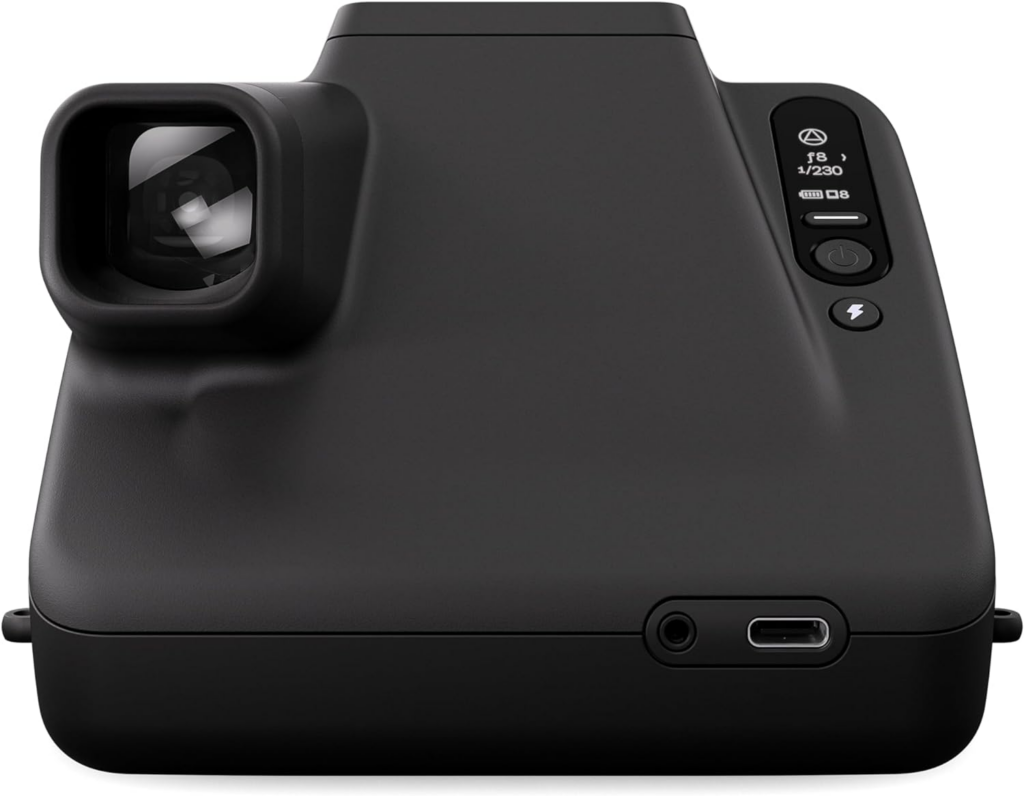
POLAROID I-2: Specifications
| Feature | Specifications |
|---|---|
| Lens | 98mm, 3-element |
| Autofocus | Continuous system, 0.4m (1.3 inches) ~ infinity range |
| Film | Polaroid i-Type Film / 600 Film / SX-70 Film |
| Exposure modes | Auto, Shutter Priority, Aperture Priority, Manual, |
| Multi-Exposure, Self Timer | |
| Apertures | f/8, f/11, f/16, f/22, f/32, f/45, f/64 |
| Shutter speeds | 1/250 – 30 sec |
| Viewfinder | Optical viewfinder with LCD display |
| Connectivity | USB-C (charging), Bluetooth (for Polaroid app) |
| Weight | 563g |
| Size | 5.9 x 4.7 x 3.6 inches (149.9 x 119.3 x 91.2mm) |
POLAROID I-2: Features
My history with Polaroid dates back to my 1990s childhood and a camera I acquired on eBay during my early 2010s university days. Back then, I admired the analog appeal, hands-on process, and the uniqueness of pegging prints to my fairy lights. The only downside was the film cost. With the Polaroid I-2, these qualities remain but with added control over print outcomes.
The I-2’s standout feature is its manual exposure controls, offering Auto, Shutter Priority, Aperture Priority, Manual, Multi-Exposure (up to four exposures in one shot), and Self Timer modes. Aperture ranges from f/8 to f/64, with shutter speeds from 1/250 sec to 30 seconds, enabling versatility in subject capture.
An exposure compensation dial allows you to adjust exposure by plus or minus two stops in third-stop increments, with settings displayed in the viewfinder. Autofocus employs center-weighted LiDAR technology, effectively focusing from 0.4 meters to infinity. The three-lens autofocus system offers a fixed focal length of 98mm.
The internal lithium-ion battery is rechargeable via USB, and a full charge can last for up to 15 packs of film. Connectivity is enhanced with Bluetooth, enabling seamless pairing with the Polaroid app for intuitive remote operation.
Before starting, familiarize yourself with the included paper guide for menu navigation and button functions to avoid wasting precious i-Type film, which can cost upwards of $2/£2 per sheet.
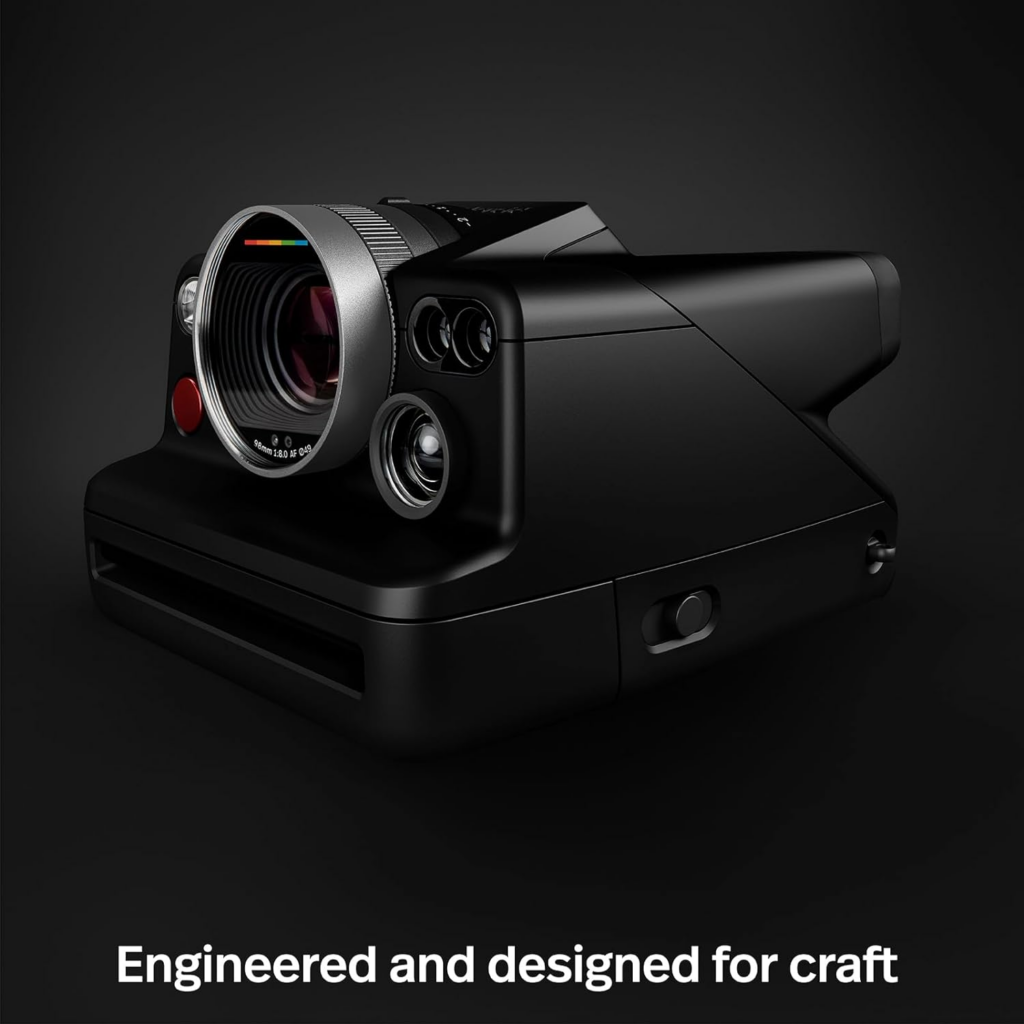
POLAROID I-2: Build and Handling
The Polaroid I-2 distinguishes itself with substantial size and weight, offering a premium feel with matte-gray impact-resistant plastic and some metal components. While durable, it’s not suited for heavy impacts or heavy rain.
Simplicity characterizes the body’s layout: a red shutter button, flash, viewfinder front, and film ejection slot on the front. Top-down, you’ll find an outer display, mode toggle button, power button, and flash button—responsive to touch. The camera supports external flash via the 2.5mm flash sync port, positioned next to the USB-C charging port. It features a large viewfinder at the back and a tripod mount below. The lens boasts an exposure compensation switch and a selection dial, both responsively clicky but prone to accidental nudges.
Visually, the I-2 exudes suaveness but leans towards the bulkier side. It’s more comfortable and secure when used with two hands and the provided wrist strap. Polaroid includes a plush cloth pouch, but frequent travel may demand a protective hard case to shield against knocks.
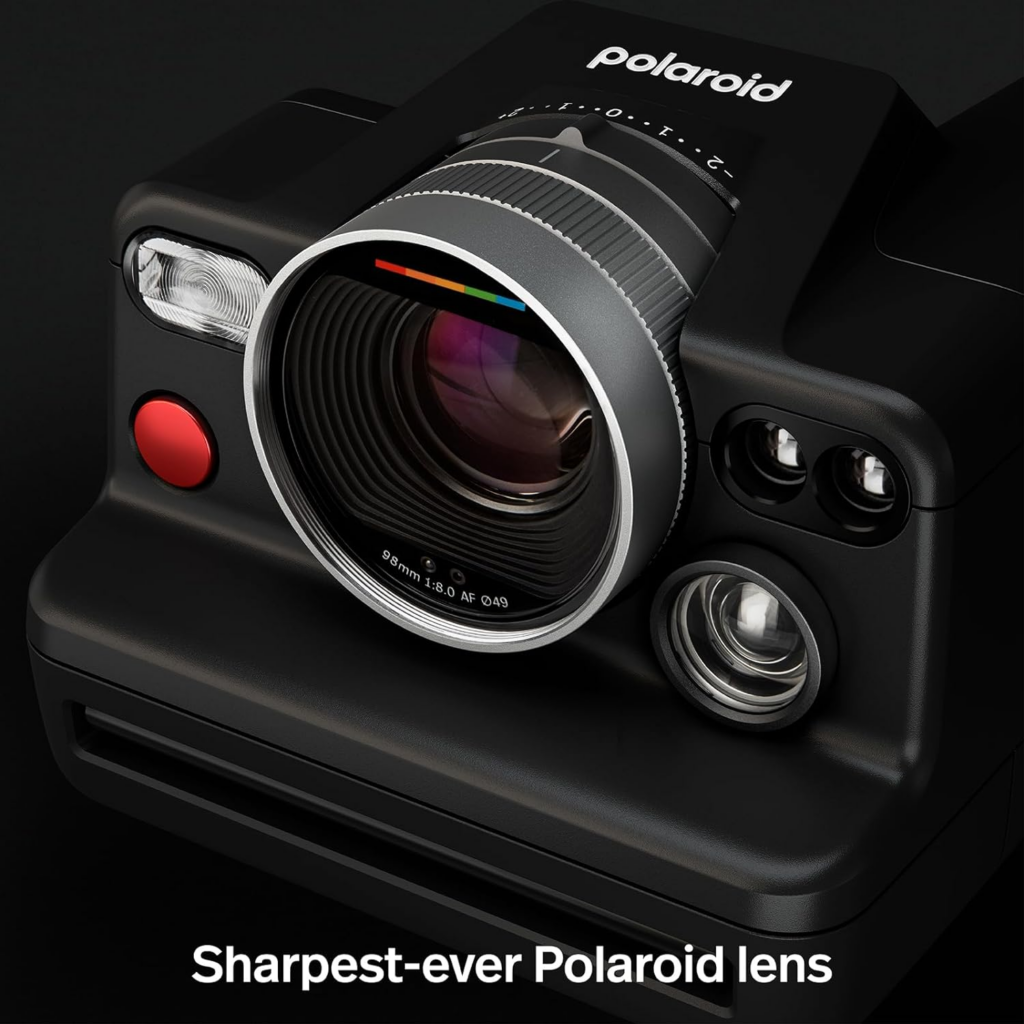
POLAROID I-2: Image Quality and Performance
The Polaroid I-2 targets a pro-grade audience or those well-versed in camera exposure settings, but image quality and manual controls yield a mixed experience.
Compatible with I-Type Polaroid film and 600 films, prints take around 15 minutes to develop and must be stored in the dark or face down. Automatic mode, coupled with overcast or soft sunshine, produces expected results with even, subtle tones and a vintage aesthetic. The flash in auto-exposure mode works capably but may struggle with metering, particularly in backlit situations.
Aperture Priority and Manual modes cater to those familiar with exposure settings. Trial and error is required initially, but users will adapt over time. Autofocus is accurate, provided the subject remains centered, and the distance is displayed when the focus is achieved.
The multiple exposure mode functions seamlessly, and the self-timer option is suitable for selfies and group shots. B&W i-type film delivers low-grain, gentle prints with a full range of tones. Blue 600 film offers vibrant, experimental colors, catering to urban scenes and avant-garde portraits.
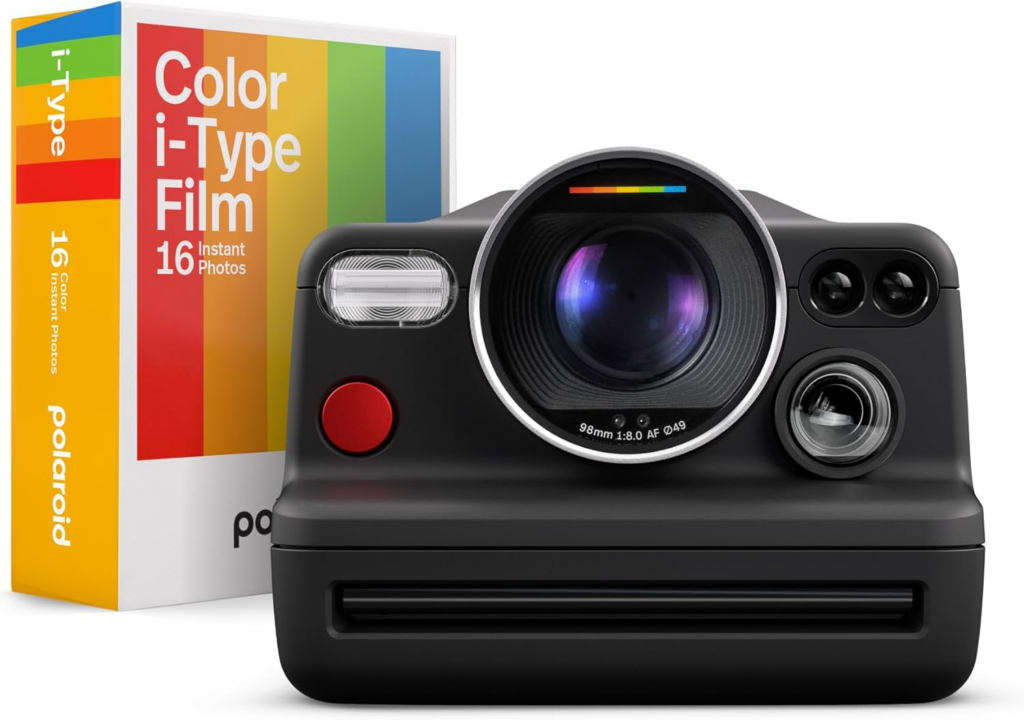
SHOULD YOU CONSIDER THE POLAROID I-2?
Buy It If:
- You crave control: Unlike most instant cameras, the Polaroid I-2 offers full control over aperture and shutter speed for a professional and creative touch.
- You prefer large prints: If you enjoy the nostalgic charm of large Polaroid prints and the classic square format.
- Impressive autofocus: The I-2’s sharp lens and reliable autofocus excel at capturing subjects from close-ups to landscapes.
Don’t Buy It If:
- On a tight budget: The camera and film costs are steep, with prints exceeding $2 / £2 each, making it pricier than Fuji’s Instax series.
- Seeking compactness: The Polaroid I-2 is the largest instant camera available, making it less portable. Consider the smaller Polaroid Go for a travel-friendly option.
Discover more from NewForTech
Subscribe to get the latest posts sent to your email.


